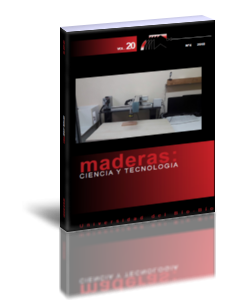Analysis of biological pretreatment of rapeseed straw with white rot fungi for enzymatic hydrolysis
Keywords:
Cellulose, delignification, hemicellulose, Phanerochaete chrysosporium, reducing sugarAbstract
The effect of biological pretreatment on the rapeseed straw was evaluated by solid-state cultivation of white rot fungi Phanerochaete chrysosporium. P.chrysosporium degraded the lignin during the pretreatment, with enzymatic hydrolysis ratios increasing in the pretreated straw (3-fold after a 15 day pretreatment). The samples were identified by XRD, FTIR and SEM. X-ray analysis showed that pretreated samples had higher crystallinity than untreated samples (39.47% for a pretreated sample compared to 33.17% for untreated samples) and FTIR spectroscopy demonstrated that the content of lignocellulose also decreased during the biological pretreatment process. The surface characterization study showed morphological changes in pretreated samples. Moreover, the biological pretreatment slowed a plunge in hydrolysis rate during enzymatic hydrolysis.

































